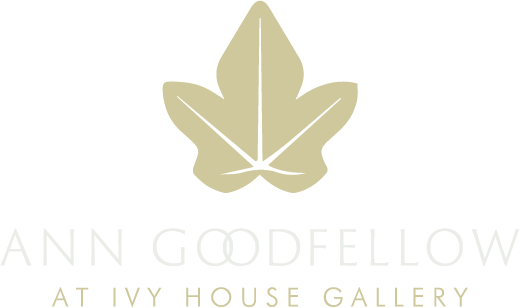Elizabeth Haines
After training as an illustrator at Brighton College of Art, I moved to Pembrokeshire in 1968. Since then, I have worked as a painter, illustrator, teacher and writer. My recent paintings are influenced by the landscape of France as well as Wales, although most of my work is not, now, topographical. Rather, it has settled in a precarious hinterland between representation and abstraction, where information gained from years of drawing from nature has blended with the imagination. Nevertheless, my work in the studio is always reinforced by drawing from life; for only when I come to draw do I see that what I thought I saw is even more exciting and miraculous than it was at first glance.
My work has been influenced over the years by an interest in the relationship between painting, poetry and music. It has also been affected by a temporary injury which forced me to paint with the left hand, a practice I now continue when necessary. Painting with the left hand (and so, we are told, with the right side of the brain) has enabled me to work more freely from memory and imagination.
I love the early 20th century European painters such as Klee and Kandinsky and the British school, including Palmer, Hitchens, the St Ives painters and the Scottish colourists. My interest in the relationships between the different arts has developed over the years, and in 2001 I completed a Ph.D. in Philosophy at the University of Wales, Lampeter. I now run workshops with young people where we explore these ideas in conjunction with practical work. My work can be seen in a number of galleries in Wales: The Attic Gallery, Swansea, Canfas in Cardigan, Goat Street Gallery in St Davids, The Golden Sheaf Gallery, Narberth, and also in Gallery Q, Dundee. And most recently in the new online Gallery, Studio Cennen.
“Elizabeth’s studio is embedded in the Pembrokeshire landscape, the ancient fields, the wild stony outcrops, the sharp coastline which make Pembrokeshire so different from Breconshire. Going there is a Narnian Experience…first into the small wooden shed, densely packed with the paraphernalia of an artist but then this opens into a larger space with a great window out on to the landscape and finally through this one enters a great space, I think formerly a cattle shed but. now subdivided into fascinating and delightful spaces, for teaching, for playing, for performing for relaxing for studying.
In some ways her paintings are like this too… you can enter them on a simple level, relishing colours and textures, enjoying apparently inconsequential marks, but from these emerge a larger space and deeper forms, sometimes there are hints of mountains and forests, intimations of buildings and trees and the further you go into the picture the more there is to see.
Elizabeth has lived in Pembrokeshire for over 40 years and her work has gradually become more abstract, more suggestive more mysterious. but she is still working in the great British tradition of the landscape, reading and interpreting nature and returning it to the viewer enriched.”
William Gibbs









